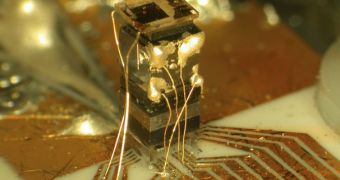A collaboration of researchers from three institutions announces plans to develop a new type of nuclear clock. The instrument would be accurate within one tenth of a second over 14 billion years, which is roughly the age of the known Universe.
This extreme level of accuracy would be made possible through the use of a single thorium ion. The electrically-charged atom will enable the study of fundamental issues pertaining to advanced physics, and may also enable the development of new types of secure communications technologies.
According to the team that made the proposal, the nuclear clock may be up to 100 times more accurate in keeping time than the most advanced atomic clocks in existence today. The latter are currently used for a wide array of scientific and practical measurements, including for GPS tracking.
In addition to demonstrating that constructing such a device is possible, there is also a practical reason for investing time and money into building a nuclear clock, Daily Galaxy quotes scientists as saying.
“If you give people a better clock, they will use it. For most applications, the atomic clocks we have are precise enough. But there are other applications where having a better clock would provide a real advantage,” says Alex Kuzmich.
The study investigator, who holds an appointment as a professor with the School of Physics at the Georgia Institute of Technology (Georgia Tech), was one of the coauthors of the new proposal.
They plan to construct the time-keeping instrument with colleagues from the University of New South Wales (UNSW) School of Physics and the University of Nevada Department of Physics. The Office of Naval Research, the National Science Foundation and a Gordon Godfrey fellowship will support them.
“In our paper, we show that by using lasers to orient the electrons in a very specific way, we can use the neutron of an atomic nucleus as the clock pendulum,” Georgia Tech research scientists and first paper author, Corey Campbell, adds.
“Because the neutron is held so tightly to the nucleus, its oscillation rate is almost completely unaffected by any external perturbations,” the investigator goes on to say.
“Our research shows that building a nuclear clock in this way is both worthwhile and feasible. We now have the tools and plans needed to move forward in realizing this system,” Kuzmich concludes.

 14 DAY TRIAL //
14 DAY TRIAL //